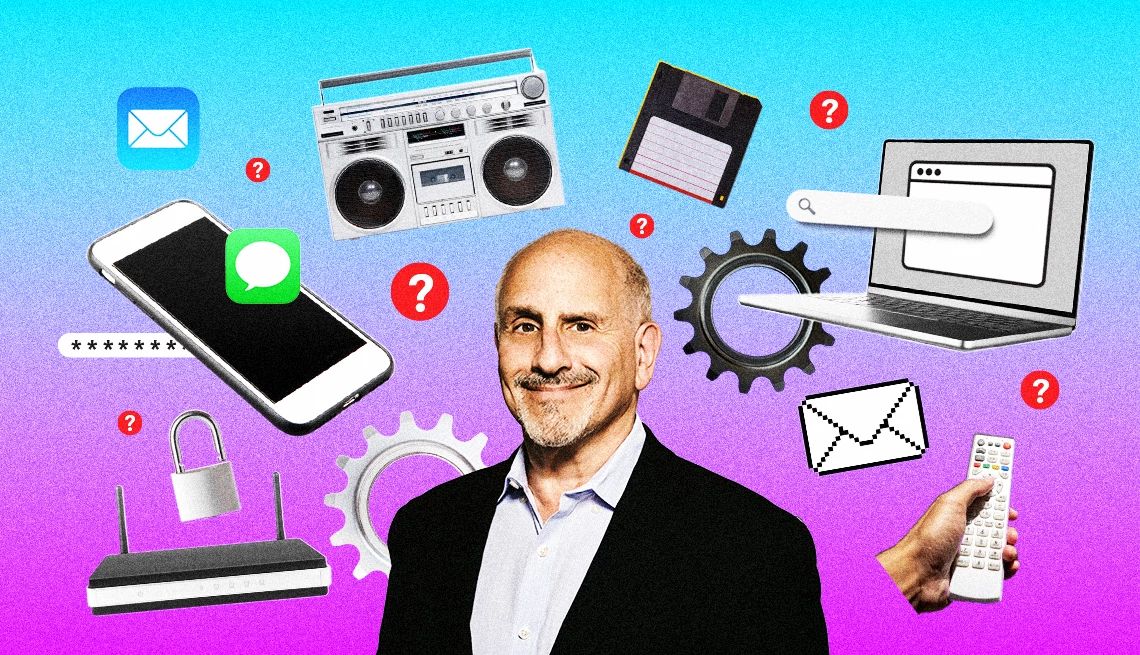AARP Hearing Center


Forgive me if you’ve heard this before, but much of the tech we’re urged to use these days is “smart.” We have smartphones, smart TVs, smart appliances and so on. Not to mention the slew of products that lean on artificial intelligence.
But if all these products are so smart, why do they confuse so many people? I see it all the time when writing my weekly Ask the Tech Guru column for Members Edition on aarp.org. Over the past year, I have received many questions from older adults who just don’t understand smart devices. We are somehow expected to be fluent in the language of the tech industry, when tech companies should be speaking the plain language of the consumer.
Why else did it seem necessary to produce a column telling readers how to decipher the status codes they encounter browsing the internet, like “403 Forbidden”?
I’m here to tell you that you are not the problem. In my experience, older adults are frequently savvier about tech than they’re given credit for. Many of us in our 50s, 60s, 70s and beyond have used computers and other tech in our jobs and elsewhere for years. More than 9 in 10 Americans over 50 have a smartphone, just like younger cohorts.


Ask The Tech Guru
AARP writer Ed Baig will answer your most pressing technology questions every Tuesday. Baig previously worked for USA Today, BusinessWeek, U.S. News & World Report and Fortune, and is author of Macs for Dummies and coauthor of iPhone for Dummies and iPad for Dummies.
Older adults are active online too, usually to stay connected. According to the Pew Research Center, internet use among adults 50 to 64 rose from 88 percent in 2019 to 98 percent just five years later. Adults 65 and older saw internet use climb from 73 percent to 90 percent. Meanwhile, more than three-fourths of people 50-plus leverage technology to keep in touch with friends and family.
A broad range of issues
For sure, some people are indeed tech novices. But even those more comfortable with tech still grapple with the constantly changing digital environment. No one can know everything.
The queries I’ve addressed so far certainly run the gamut: how to bolster a Wi-Fi signal; recover missing smartphone photos; detect if the old friend suddenly reaching out on social media is an imposter; retrieve messages that were ill-advised or sent prematurely, hopefully before they damage relationships; and reclaim space when your device is low on storage. I’ve also covered what to do with your old VHS tapes. And how to figure out if your smart TV is spying on you.
Whenever possible, I try to bring my own experiences into my guidance; tech journalists are hardly immune to issues that plague readers. In a column on what to do if your phone gets wet, I related how I clumsily dropped my handset into an Irish sewer grate. Spoiler alert: It survived.
So please share your struggles with me. I’ve learned that there’s no such thing as a dumb question. And yeah, that’s me being smart.

































































You Might Also Like
Keep Your Phone Number, Lose the Landline
You can keep it. Tech expert Ed Baig can help you outTransfer Photos From Phone to Computer
You can connect it via data cable or rely on the cloud
Why Is Your Computer Running Slowly?
The device could have a virus. Or it just might be old